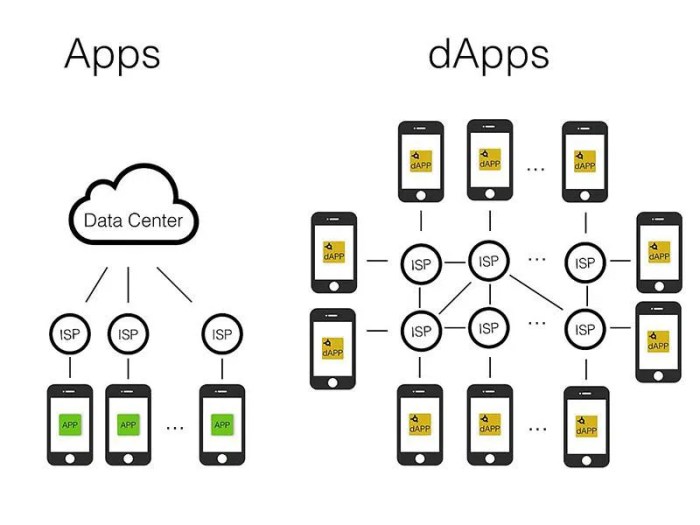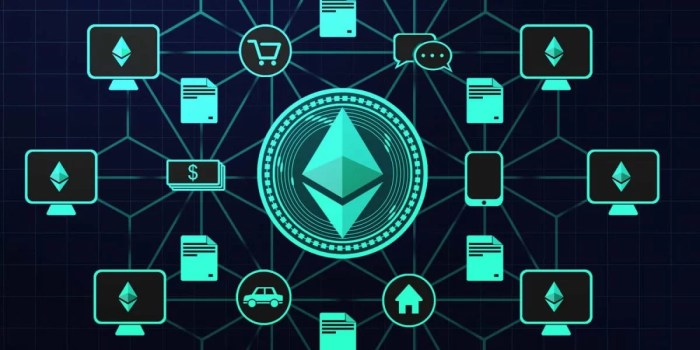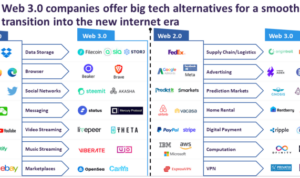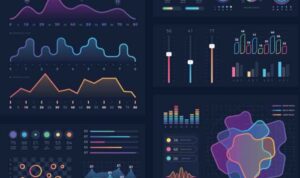Decentralized apps, or DApps for short, are reshaping the way we interact with technology. Imagine a world where applications are not controlled by a single entity but instead run on a decentralized network, offering increased security, privacy, and transparency. This is the realm of decentralized apps, where innovation knows no bounds.
What are Decentralized Apps (DApps)?
Decentralized Apps, or DApps, are applications that run on a decentralized network of computers rather than a single server. They use blockchain technology to ensure security, transparency, and immutability of data. DApps are open-source and operate autonomously without the need for a central authority.
Key Characteristics of DApps
- Decentralized: DApps do not rely on a single central server, making them resistant to censorship and single points of failure.
- Transparency: All transactions and data in DApps are recorded on a public blockchain, providing transparency and auditability.
- Immutability: Data stored on the blockchain in DApps cannot be altered or deleted, ensuring the integrity of the application.
Differences from Traditional Apps, Decentralized apps
- Centralization: Traditional apps rely on a central server for data storage and processing, while DApps operate on a decentralized network.
- Control: DApps give users more control over their data and transactions, reducing the influence of third parties.
- Security: The use of blockchain technology in DApps enhances security by eliminating single points of failure and providing tamper-proof data storage.
Examples of Popular DApps
-
Ethereum: A platform that enables developers to create and deploy decentralized applications.
-
Uniswap: A decentralized exchange that allows users to trade cryptocurrencies without the need for a central authority.
-
Brave Browser: A privacy-focused web browser that rewards users with cryptocurrency for viewing ads.
Benefits of Decentralized Apps
Decentralized apps (DApps) offer a range of advantages over traditional centralized applications. These benefits contribute to improved data security, privacy, and overall user experience.
Data Security and Privacy
Decentralized apps utilize blockchain technology to store data across a network of computers, rather than on a single centralized server. This distributed nature enhances data security by reducing the risk of a single point of failure. Additionally, since data is encrypted and stored in multiple locations, it is less vulnerable to hacking or unauthorized access.
- Blockchain technology ensures data integrity and immutability, making it tamper-proof.
- Users have greater control over their personal information and can choose what data to share.
- Smart contracts in DApps automate processes while maintaining transparency and security.
How Decentralized Apps Work
Decentralized apps, or DApps, operate on a peer-to-peer network of computers rather than a centralized server. This architecture ensures that no single entity has control over the application, making them more secure and resistant to censorship.
Blockchain technology plays a crucial role in enabling DApps by providing a decentralized and immutable ledger to record transactions and smart contracts. This ensures transparency and trust in the system, allowing users to interact with the application without the need for intermediaries.
Architecture of Decentralized Apps
- Decentralized Storage: DApps store data across multiple nodes in the network, ensuring redundancy and security.
- Smart Contracts: Self-executing contracts on the blockchain that automatically enforce the terms of an agreement.
- Consensus Mechanisms: Algorithms that validate transactions and secure the network without the need for a central authority.
Interacting with Decentralized Apps
- Wallet Integration: Users need a digital wallet to store and manage their cryptocurrencies for transactions within the DApp.
- Decentralized Identity: Users control their identity and data, reducing the risk of privacy breaches.
- Token Economy: Many DApps have their native tokens that power the ecosystem and incentivize users to participate.
Challenges and Limitations of Decentralized Apps

Decentralized apps (DApps) offer numerous benefits, but they also face several challenges that need to be addressed for wider adoption and efficiency in the long run.
Scalability Issues in Decentralized Applications
- One of the major challenges faced by DApps is scalability. As the number of users and transactions increase, the blockchain network may struggle to handle the load efficiently.
- Scalability issues can lead to slower transaction speeds, higher fees, and overall decreased performance, hindering the user experience.
- Developers are constantly working on solutions such as sharding, layer 2 protocols, and optimization techniques to improve scalability in DApps.
Regulatory Hurdles and Legal Implications for DApps
- Another significant challenge for DApps is navigating regulatory frameworks and legal implications in various jurisdictions.
- Regulatory uncertainty can pose risks for developers and users, impacting the adoption and growth of decentralized applications.
- Compliance with anti-money laundering (AML) and know your customer (KYC) regulations can be challenging in decentralized environments where user identities are pseudonymous.
- Ensuring legal compliance while maintaining the core principles of decentralization is a delicate balance that DApp developers must strive to achieve.
Decentralized App Development: Decentralized Apps

Developing decentralized apps (DApps) involves a unique set of steps compared to traditional app development. DApps are designed to operate on a decentralized network, utilizing blockchain technology to ensure security, transparency, and autonomy. Here are the essential steps involved in developing a decentralized app:
Steps in Developing a Decentralized App
- Define the Problem Statement: Clearly Artikel the problem your DApp aims to solve and identify the target audience.
- Choose the Right Blockchain Platform: Select a suitable blockchain platform based on factors like scalability, security, and community support.
- Design Smart Contracts: Develop smart contracts using programming languages like Solidity to automate transactions and enforce rules on the blockchain.
- Build User Interface: Create a user-friendly interface to interact with the decentralized app and connect it to the blockchain network.
- Test and Deploy: Thoroughly test the DApp for bugs, vulnerabilities, and usability before deploying it on the blockchain.
- Maintain and Update: Continuously monitor the DApp, address user feedback, and update the app to improve functionality and security.
Comparison with Traditional App Development
- In traditional app development, centralized servers are used to store data and manage transactions, while DApps operate on a decentralized network.
- DApps rely on blockchain technology and smart contracts for secure and transparent transactions, eliminating the need for intermediaries.
- Traditional apps are often easier to develop and deploy, but DApps provide greater security, privacy, and control to users.
Best Practices for Designing User-Friendly DApps
- Focus on Simplicity: Design a clean and intuitive user interface to enhance user experience and encourage adoption.
- Ensure Security: Implement robust security measures to protect user data and prevent unauthorized access to the DApp.
- Provide Clear Instructions: Guide users on how to interact with the DApp and explain the benefits of using decentralized technology.
- Offer Seamless Integration: Enable seamless integration with popular wallets and blockchain networks to facilitate transactions and interactions.
- Engage with the Community: Foster a strong community around your DApp to gather feedback, address issues, and promote adoption.


